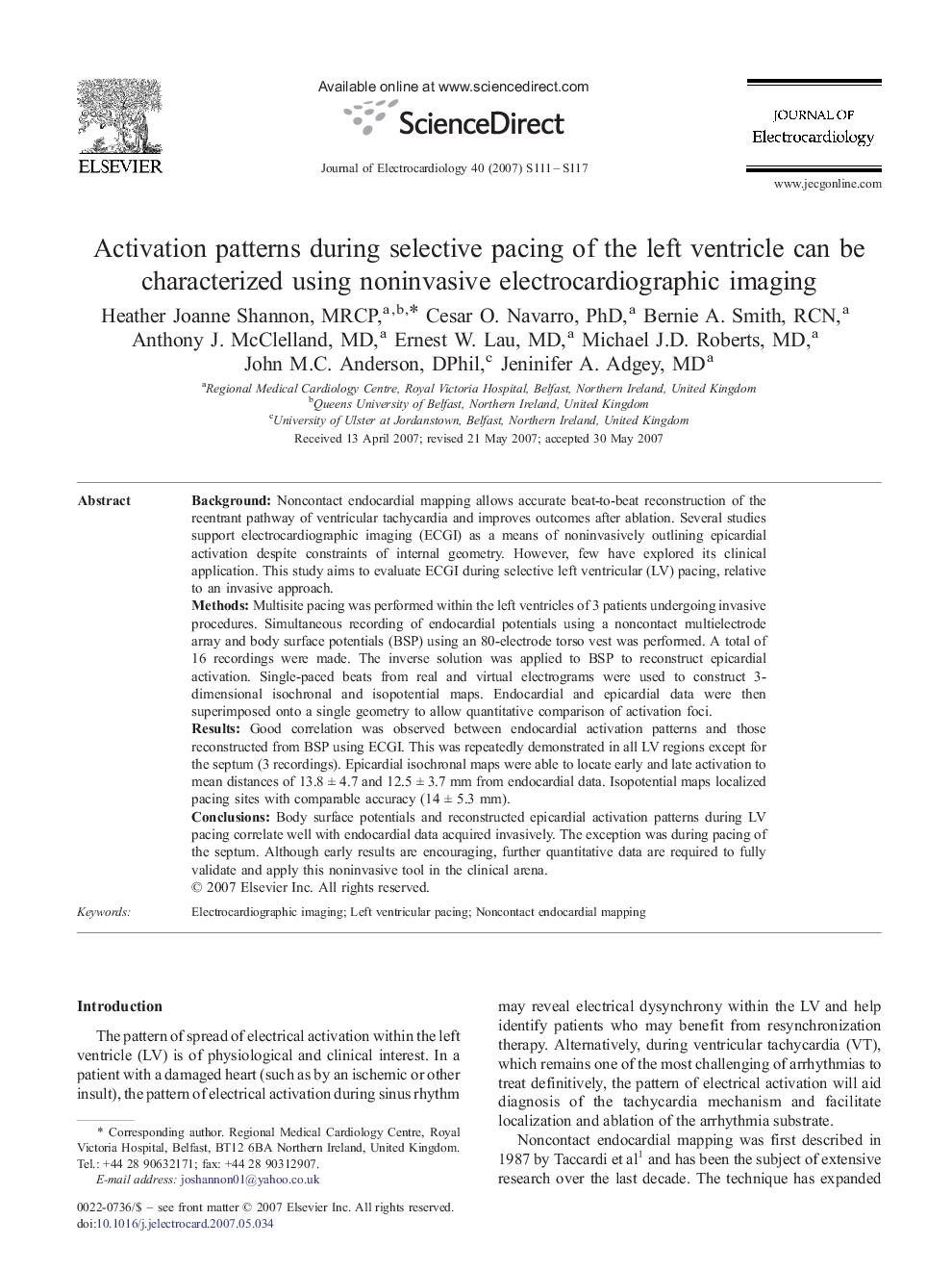| Article ID | Journal | Published Year | Pages | File Type |
|---|---|---|---|---|
| 2968185 | Journal of Electrocardiology | 2007 | 7 Pages |
BackgroundNoncontact endocardial mapping allows accurate beat-to-beat reconstruction of the reentrant pathway of ventricular tachycardia and improves outcomes after ablation. Several studies support electrocardiographic imaging (ECGI) as a means of noninvasively outlining epicardial activation despite constraints of internal geometry. However, few have explored its clinical application. This study aims to evaluate ECGI during selective left ventricular (LV) pacing, relative to an invasive approach.MethodsMultisite pacing was performed within the left ventricles of 3 patients undergoing invasive procedures. Simultaneous recording of endocardial potentials using a noncontact multielectrode array and body surface potentials (BSP) using an 80-electrode torso vest was performed. A total of 16 recordings were made. The inverse solution was applied to BSP to reconstruct epicardial activation. Single-paced beats from real and virtual electrograms were used to construct 3-dimensional isochronal and isopotential maps. Endocardial and epicardial data were then superimposed onto a single geometry to allow quantitative comparison of activation foci.ResultsGood correlation was observed between endocardial activation patterns and those reconstructed from BSP using ECGI. This was repeatedly demonstrated in all LV regions except for the septum (3 recordings). Epicardial isochronal maps were able to locate early and late activation to mean distances of 13.8 ± 4.7 and 12.5 ± 3.7 mm from endocardial data. Isopotential maps localized pacing sites with comparable accuracy (14 ± 5.3 mm).ConclusionsBody surface potentials and reconstructed epicardial activation patterns during LV pacing correlate well with endocardial data acquired invasively. The exception was during pacing of the septum. Although early results are encouraging, further quantitative data are required to fully validate and apply this noninvasive tool in the clinical arena.
